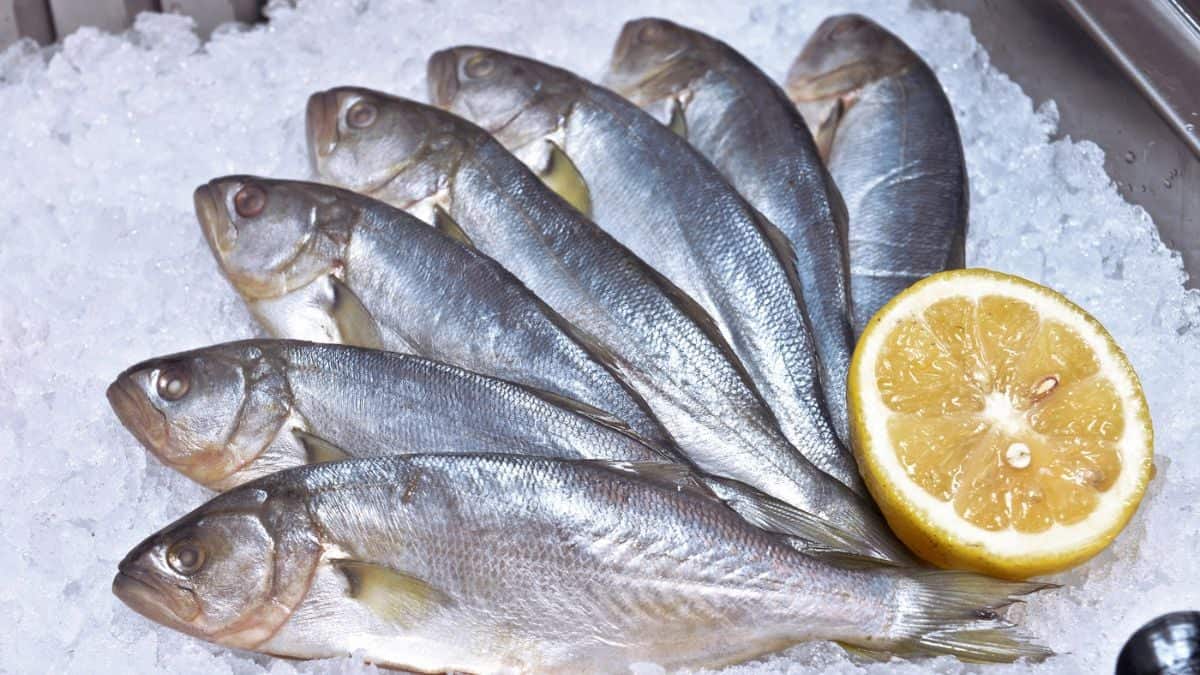Eating fish is a great way to get essential nutrients like omega-3 fatty acids, but not all fish are created equal when it comes to mercury content. High levels of mercury in some fish can be a health concern, particularly for pregnant women and young children. This guide lists the top high-mercury fish to steer clear of and provides safer alternatives to enjoy instead. By choosing wisely, you can reap the benefits of seafood without the risks associated with mercury exposure.

Swordfish

Swordfish, while a popular steak-like option in any upscale restaurant, are known for their high mercury levels because they are large, predatory fish that eat a lot of smaller fish, accumulating mercury over time. For a similar texture but with lower mercury, try mahi-mahi or salmon.
King Mackerel

King mackerel, which is a different species from the canned Atlantic mackerel you may normally eat, are large, predatory fish that accumulate mercury due to their long life span and high position in the food chain. Opt for smaller, short-lived species such as Atlantic mackerel, sardines or herring for similar oily richness without the mercury risk.
Shark

Shark is much less common in most people’s diets but beware that they’re also high on the list of mercury due to their diet of other fish and their long lifespans. A safer alternative with a firm texture is wild-caught Pacific halibut.
Tilefish

Tilefish from the Gulf of Mexico are bottom-dwelling fish living at the edge of the continental shelfare. According to the FDA, they contain an average of 1 part per million high in mercury because they live longer and eat smaller, mercury-containing fish. Swap tilefish for tilapia or catfish for a mild, sweet flavor with less environmental impact.
Tuna

Certain tuna species, like bigeye and bluefin, are high in mercury due to their size, diet, and longevity. Light canned tuna (skipjack) or wild-caught Alaskan salmon are better options for lower mercury content.
Orange Roughy

Orange Roughy is prized for its mild flavor and firm texture, suitable for various cooking methods. Its popularity, however, is shadowed by high mercury levels due to its long lifespan (up to 150 years) and diet. For a similar culinary experience without the mercury concern, consider U.S. farmed trout or Arctic char as sustainable and safer options. These alternatives provide comparable flavor and versatility in recipes.
Marlin

Marlin is a highly sought-after game fish known for its impressive size and the challenge it presents to anglers. Its rich, slightly sweet meat makes it a favorite for grilling and sashimi. However, marlins’ high mercury content (about .5 PPM), a result of their predatory lifestyle and position at the top of the food chain, raises health concerns. For those seeking similar taste and texture, striped bass or U.S. farmed barramundi are excellent, lower-mercury alternatives.
Bluefish

Bluefish are known for their strong, rich flavor and oily meat, making them a favorite among those who appreciate bolder tasting fish. However, their place high in the marine food web means they can have significant mercury levels. Sardines or mackerel, with their similarly robust flavors but
Sablefish

Sablefish, or black cod, is revered for its buttery, rich flavor and velvety texture, often featured in fine dining establishments, particularly famous for its use in miso-glazing techniques. While it’s lower in mercury compared to the other fish mentioned, it can still pose a risk when consumed in large amounts. Atlantic mackerel or Pacific cod are healthier alternatives that offer a comparable depth of flavor and richness without the high mercury levels.
Grouper

Grouper is celebrated for its moist, mild-flavored meat, which is versatile enough for a range of dishes. If you’ve ever been to Florida, you’ll find Grouper on almost restuarant menu whether fried, steamed or stuffed in a taco. This fish’s tendency to accumulate mercury comes from its diet of smaller fish. As a safer choice, Pacific halibut or U.S. farmed catfish offer a similar flaky texture and mild taste, making them great substitutes for grouper in any recipe.
Here’s What I Did To Lose 15 Pounds And Finally See My Abs

A few years ago, after being a CrossFit junkie for 4 years at the time, I decided on a goal: I wanted to finally see my abs and look how I felt I should’ve for the amount of time I spent in the gym. As a mid-30s woman who already ate well and considered myself healthy, it was an interesting journey to see what it took to actually achieve this goal. Here were the things that made the most difference. Spoiler alert: there’s no magic pill.
Continue Reading Here: Here’s What I Did To Lose 15 Pounds And Finally See My Abs
11 Simple Snacks for Better Blood Sugar Control

Keeping your blood sugar in check doesn’t mean you have to skimp on snacking. In fact, the right snacks can be your secret weapon in maintaining those levels while still satisfying those mid-day cravings. Pairing up the good stuff—fiber, proteins, and healthy fats—can help to keep blood sugar steady. These snack ideas are as delicious as they are smart for your health.
See Them Here: 11 Simple Snacks for Better Blood Sugar Control
10 Foods That Deceive You Into Thinking They’re Healthy

It’s easy to be fooled by foods that wear a healthy halo, especially when we’re trying to make better eating choices. Here’s the truth behind 10 foods that might seem like they’re on your side in the health department, but actually aren’t. Learn what makes them less than ideal and what to opt for in their place.
See Them Here: 10 Foods That Deceive You Into Thinking They’re Healthy
Select images provided by Depositphotos.
Gina Matsoukas is an AP syndicated writer. She is the founder, photographer and recipe developer of Running to the Kitchen — a food website focused on providing healthy, wholesome recipes using fresh and seasonal ingredients. Her work has been featured in numerous media outlets both digital and print, including MSN, Huffington post, Buzzfeed, Women’s Health and Food Network.








